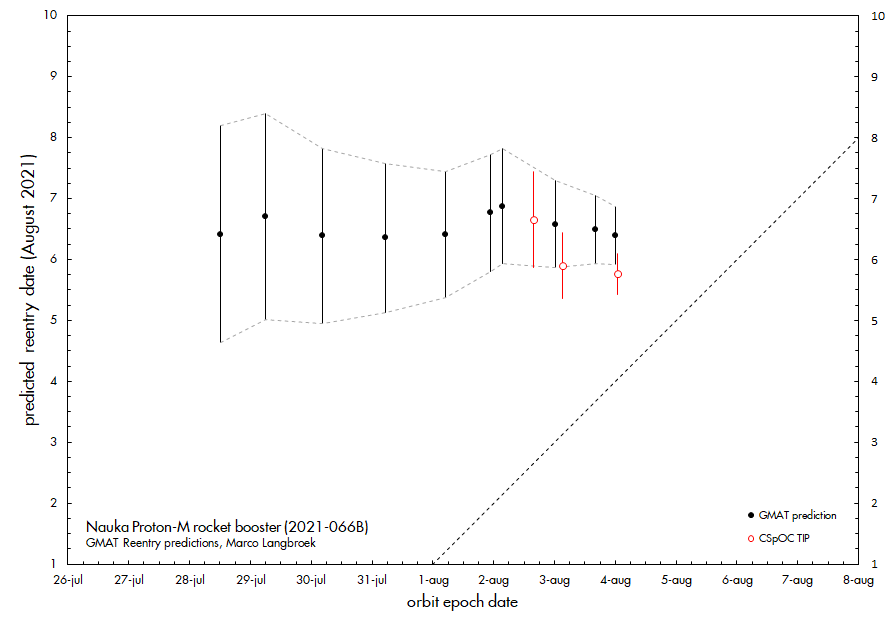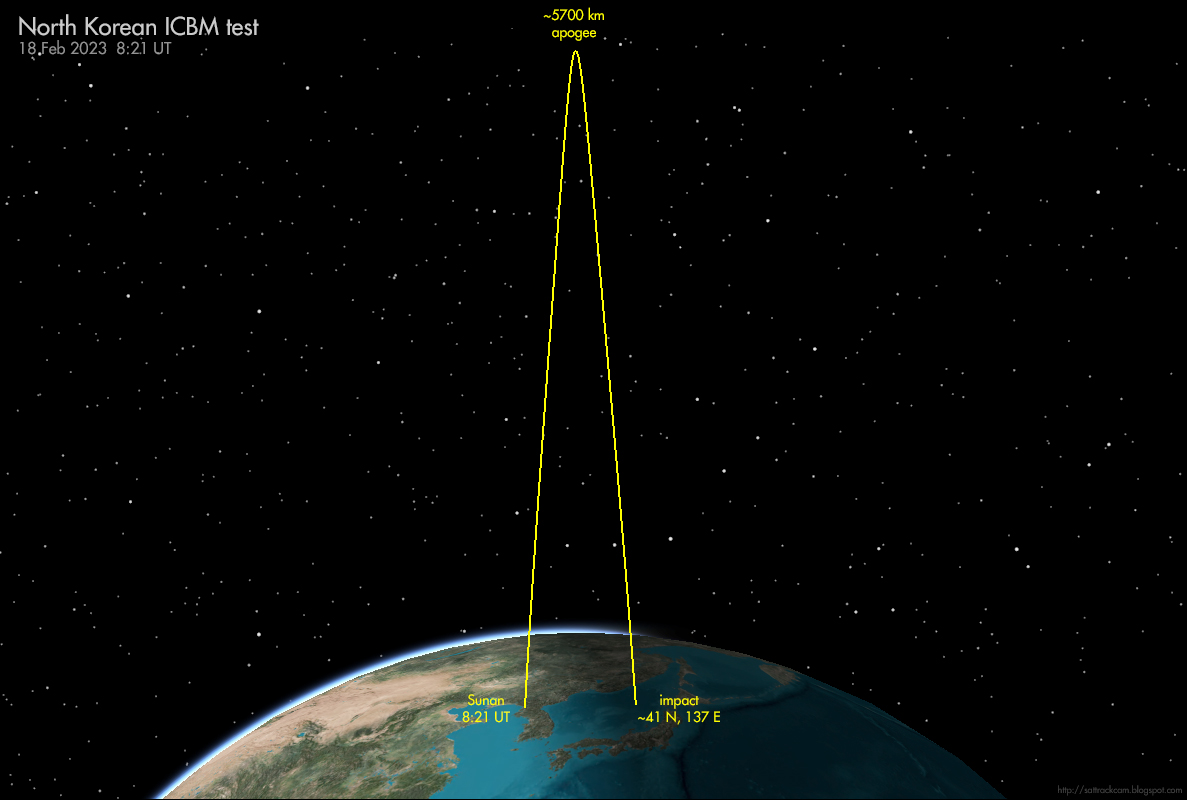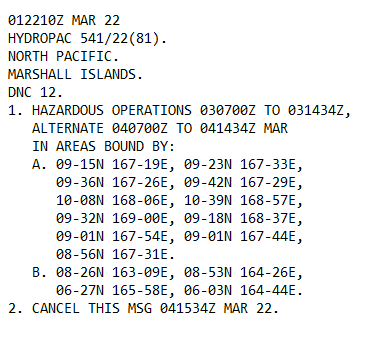The #Proton-M third stage from the #Nauka launch is now coming down faster and faster.
Current prediction models place reentry within 2 days from now, either late August 5 or early August 6, with the trend in predictions tending towards August 5.
@SSC_NL

Current prediction models place reentry within 2 days from now, either late August 5 or early August 6, with the trend in predictions tending towards August 5.
@SSC_NL


These reentry forecasts are also on my blog:
sattrackcam.blogspot.com/2021/08/proton…
sattrackcam.blogspot.com/2021/08/proton…
The #Proton-M third stage from the #Nauka launch now has less than one day left in orbit. Current model forecasts suggest a reentry in the morning of August 6 UT. 



New update. The #Proton-M rocket stage is going down faster and faster. Last published orbit (12:14 UT) has it in a 178 x 146 km orbit
My nominal current GMAT reentry result is 6 Aug 2:56 +- 3h UT, but looking at the trend it will probably be a bit earlier.

My nominal current GMAT reentry result is 6 Aug 2:56 +- 3h UT, but looking at the trend it will probably be a bit earlier.


New orbit released, pushing #reentry of the #Proton-M 3rd stage from the #Nauka launch slightly back: my current modelled reentry is at 5:07 +- 2.5 h UT (6 Aug). This window encompasses about 4 revolutions around earth.
Current CSpOC TIP is 4:27 +- 2h UT

Current CSpOC TIP is 4:27 +- 2h UT


This is the approximate trajectory over the time window for the #Proton rocket stage #reentry given in the previous tweet.
Yellow circle is the nominal GMAT position, grey the current CSpOC TIP.
Note that both are still quite meaningless as the uncertainty is multiple revolutions
Yellow circle is the nominal GMAT position, grey the current CSpOC TIP.
Note that both are still quite meaningless as the uncertainty is multiple revolutions

New update for the #Proton-M 3rd stage #reentry: my GMAT modelling suggests reentry at 5:34 +- 1.7h UT, 6 Aug.
HOWEVER, I have my doubts about the last 3 orbit updates, as the perigee suddenly is (too) stable at 145 km. So I suspect we'll acctually see reentry earlier.

HOWEVER, I have my doubts about the last 3 orbit updates, as the perigee suddenly is (too) stable at 145 km. So I suspect we'll acctually see reentry earlier.


Overnight a new orbit for the #Proton-M 3rd stage with almost the same epoch as previous one was published: confirms the last few orbits are unreliable.
My GMAT modelled #reentry time based on this orbit: 4:49 +- 1.6h UT.
So it is down, have to wait for the final TIP for where.

My GMAT modelled #reentry time based on this orbit: 4:49 +- 1.6h UT.
So it is down, have to wait for the final TIP for where.


The #Proton-M 3rd stage should have come down last night somewhere on the line in the map below. Nominal predicted positions are shown but quite meaningless with a ~1.6 hr (= two full orbital revolutions) uncertainty.
Perhaps a new TIP later today might shed some more light.
Perhaps a new TIP later today might shed some more light.

The final CSpOC #TIP for the #reentry of the #Proton-M upper stage from the Nauka launch today is in:
4.46 +/- 1m UT at 37.8 N 155.7 W.
Turns out my last nominal GMAT estimate (4:49 UT) was very close!!!
(in all honesty: given the uncertainty margins, this is pure luck...)
4.46 +/- 1m UT at 37.8 N 155.7 W.
Turns out my last nominal GMAT estimate (4:49 UT) was very close!!!
(in all honesty: given the uncertainty margins, this is pure luck...)

• • •
Missing some Tweet in this thread? You can try to
force a refresh













